Sitting above the Gulf of Mexico and rich with swamps and bayous, Louisiana is a land of water. Indeed, much of the state is under sea level, for good or for ill. And when we consider the largest lakes in Louisiana, it makes us wonder how there’s any land left! This fact has affected the entire culture of Louisiana and makes it unique.
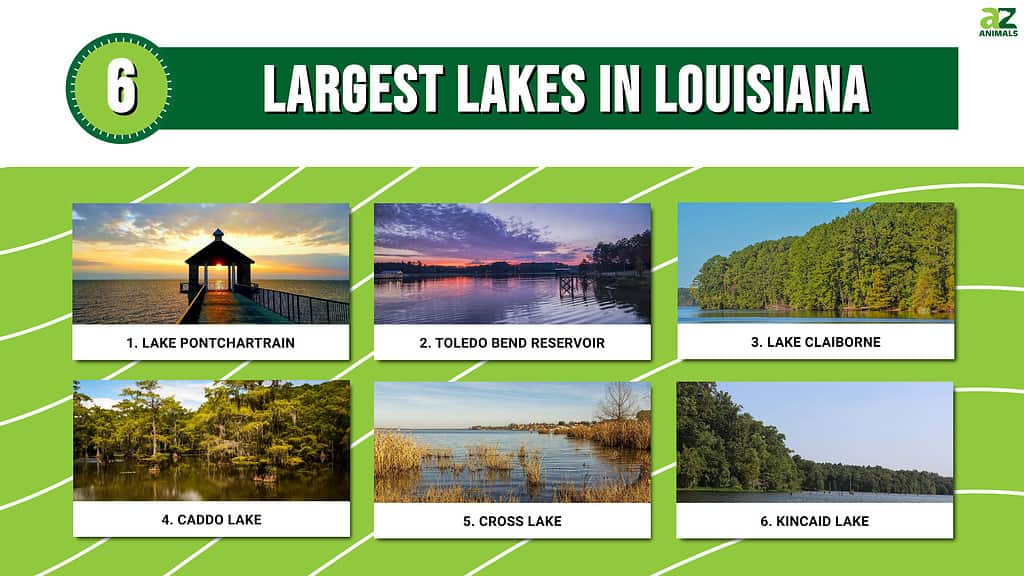
For this article, the size of a lake is determined by its volume, which is determined by acre-feet. An acre-foot is how much water can cover an acre of space to the depth of a foot. Here are the six largest lakes by volume in Louisiana.
1. Lake Pontchartrain
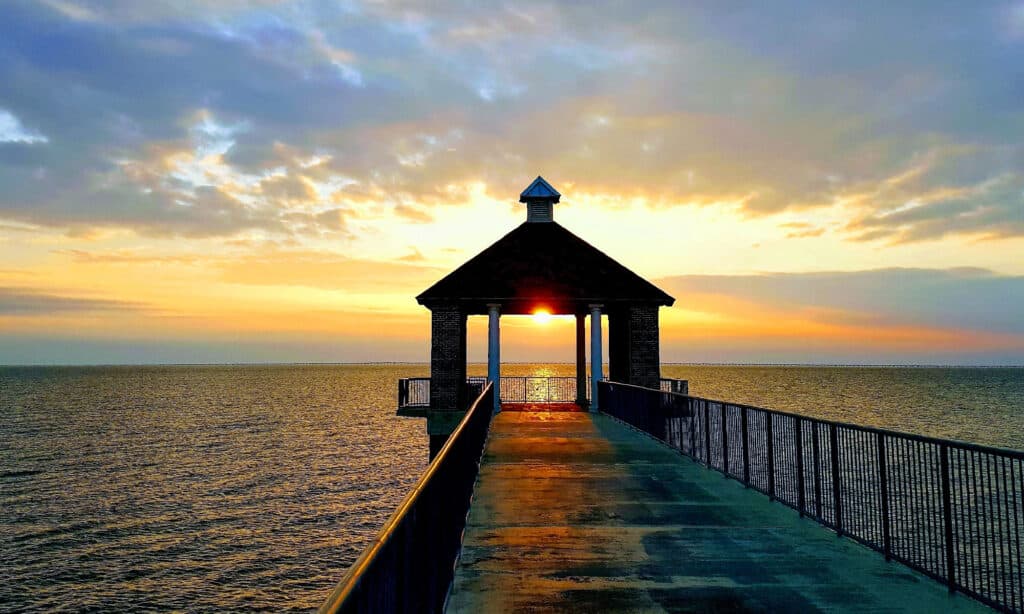
Lake Pontchartrain is Louisiana’s largest lake at nearly five million acre-feet.
©iStock.com/Idylle Images
At 4,838,400 acre-feet, Lake Pontchartrain is the largest lake in Louisiana. Some geologists don’t consider Pontchartrain a lake at all but an estuary. This means it’s a body of water with an outlet to the sea. In the case of Lake Pontchartrain, one side of it flows into the Gulf of Mexico through a marsh. Because of this, the salinity of the lake varies. Its water is fresh where rivers and bayous drain into it, but it’s brackish near the Gulf. The lake isn’t deep, as its depth averages about 12 to 14 feet. It was named for Louis Phélypeaux, who was the Count of Pontchartrain and one of the ministers of Louis XIV of France.
The Lake Pontchartrain Causeway also crosses the lake. Two bridges make up this causeway, the longest of which is about 24 miles. This makes it the world’s longest continuous bridge over water. It opened in 1956.
Things to do in and around Lake Pontchartrain include swimming, boating, water skiing, jet skiing, and even sailing. Vacation rentals are available, and fishing is allowed. Trout and pike flourish in the lake.
2. Toledo Bend Reservoir
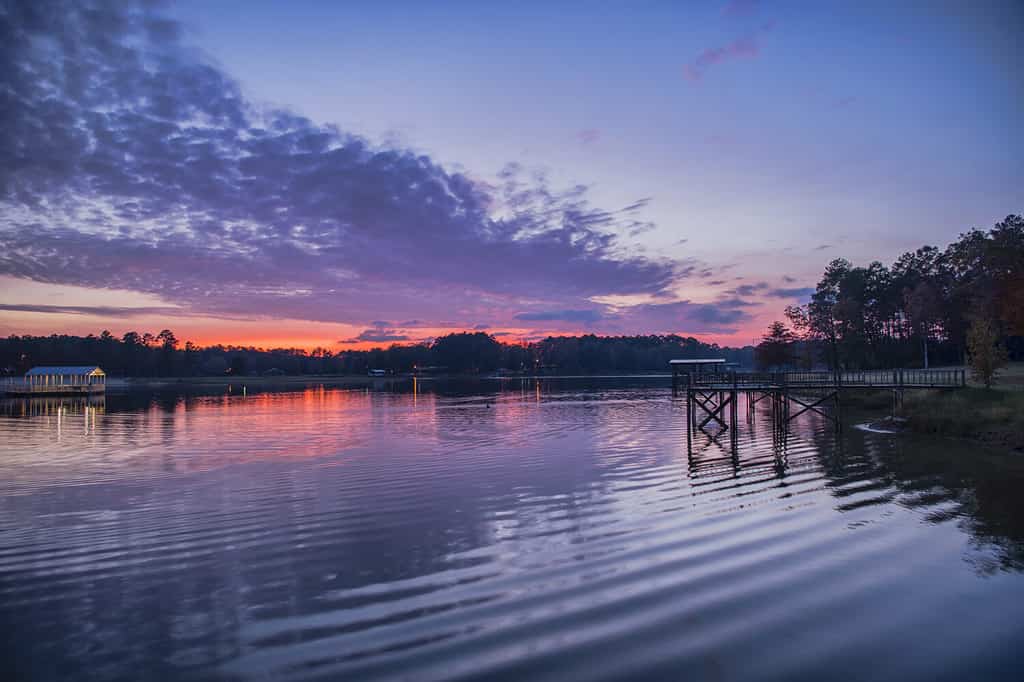
The Toledo Bend Reservoir is the largest artificial lake in the south.
©Bonnie Taylor Barry/Shutterstock.com
This lake is artificial and, at 4,477,000 acre-feet, is the second of Louisiana’s six largest lakes. It’s also the largest artificial body of water in the south and the largest artificial lake shared by Louisiana and Texas. Found on the Sabine River, it’s on the border of the two states and was built by both. The project began in the 1950s and was finally completed in 1969.
As a reservoir, Toledo Bend is a source of potable water and hydroelectric power. With a shoreline that stretches 1,200 miles, it is the site of all kinds of recreational activities. They include swimming, hiking, boating, and bird and wildlife watching. Fish that populate the reservoir include crappies, catfish, and both black and white bass.
3. Lake Claiborne
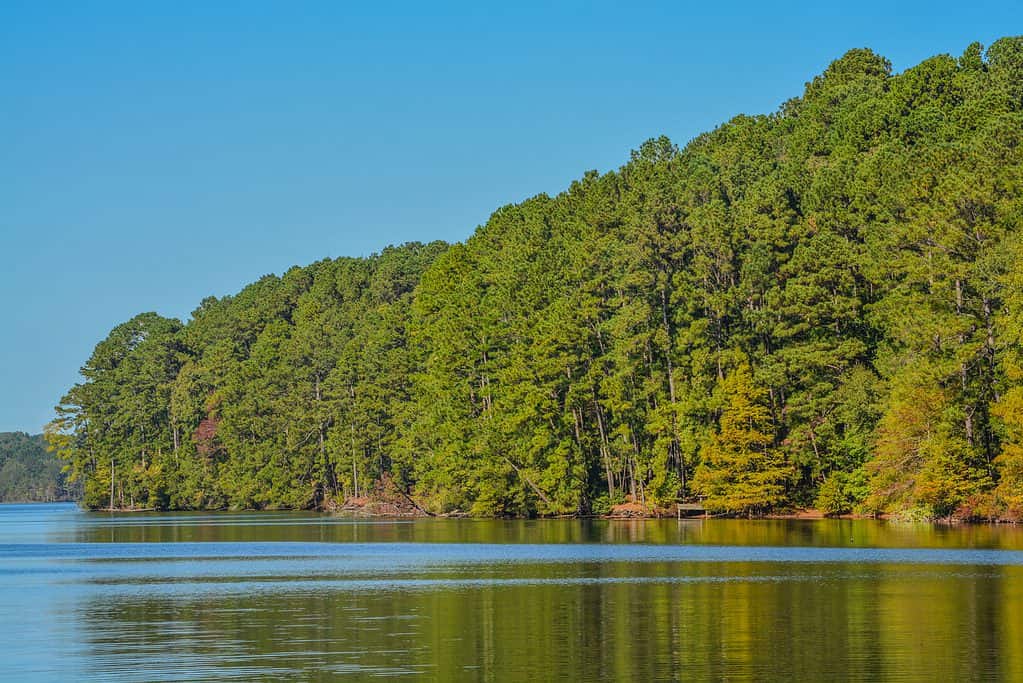
At 99,500 acre-feet, Lake Claiborne is famous for the purity of its water.
©Norm Lane/Shutterstock.com
Much smaller than either Lake Pontchartrain or the Toledo Bend Reservoir, Lake Claiborne is 99,500 acre-feet. Found in northern Louisiana in Claiborne Parish, this lake is formed by one of the D’Arbonne River’s tributaries and boasts some of the state’s purest water. It should be since it was created to be a source of drinking water. People still enjoy Lake Claiborne for recreation, including swimming, boating, camping, jet and water skiing, hiking, picnicking, and viewing birds and wildlife. The area features a playground, picnic areas, and at least one campground. You can also enjoy its beach. The water is cool even during Louisiana’s scorching summers because of the natural springs found beneath it.
The lake is near the G.S. Ford Museum and a golf course, and it hosts music shows and a yearly rodeo. Fish thrive in the clean waters of Lake Claiborne. They include different species of bass, black crappies, catfish, pickerel, perch, pike, sunfish, and walleye.
4. Caddo Lake
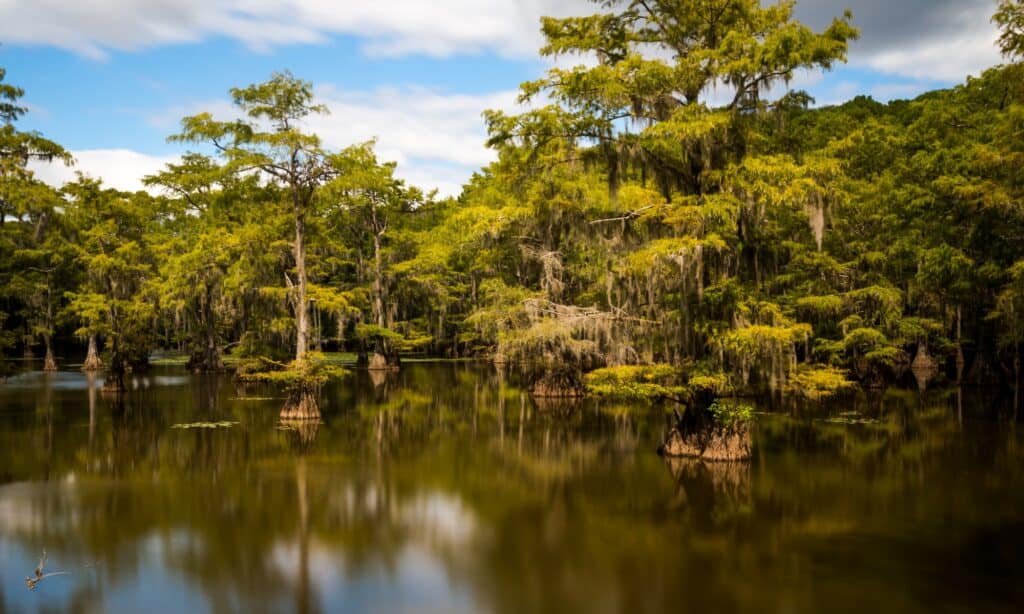
Is the cypress forest around Caddo Lake the home of Bigfoot?
©Victoria Ditkovsky/Shutterstock.com
Like the Toledo Bend Reservoir, this lake is found on the border between Louisiana and Texas. At 85,100 acre-feet, it’s a complex network of waterways, bayous, swamps, oxbows, and small, forested islands. The lake’s environs are ancient and home to the world’s biggest cypress forest, with hundreds of-year-old trees. Caddo Lake is, in fact, a protected wetland under the Ramsar Convention on Wetlands of International Importance. You’ll find dozens of fish species and hundreds of birds in its waters. These include herons, owls, egrets, and different types of ducks. Caddo Lake is the place to go if you’re a birder.
Recreational activities aren’t found so much on the lake but on the Big Cypress Bayou that feeds it. In Caddo Lake State Park, you can hike, camp, swim, fish, boat, and enjoy picnics. The area’s beauty has drawn many filmmakers, and it’s the setting of movies like The Long Hot Summer. It allegedly has its version of Bigfoot, called the “Caddo Critter.” You can help search for it by joining field trips sponsored by the Texas Bigfoot Research Center.
5. Cross Lake

Cross Lake is famous for fishing, but there are rules.
©Faina Gurevich/Shutterstock.com
This lake was built near Shreveport in 1926 when the Cross Lake Dam and Spillway were built. At 65,807 acre-feet, it’s famous for fishing, though there are a few rules to abide by. One, for example, is that you release any bass that’s between 14 and 17 inches long. Other fish to catch in Cross Lake include bluegill sunfish, catfish, and perch. You can also enjoy waterskiing and swimming, though you should know that alligators live in the water.
Cross Lake is near two parks that offer ball fields, tennis courts, playgrounds, picnic areas, and boat ramps. It’s also near cities hosting art, music, and food festivals with fantastic restaurants and shopping.
6. Kincaid Lake
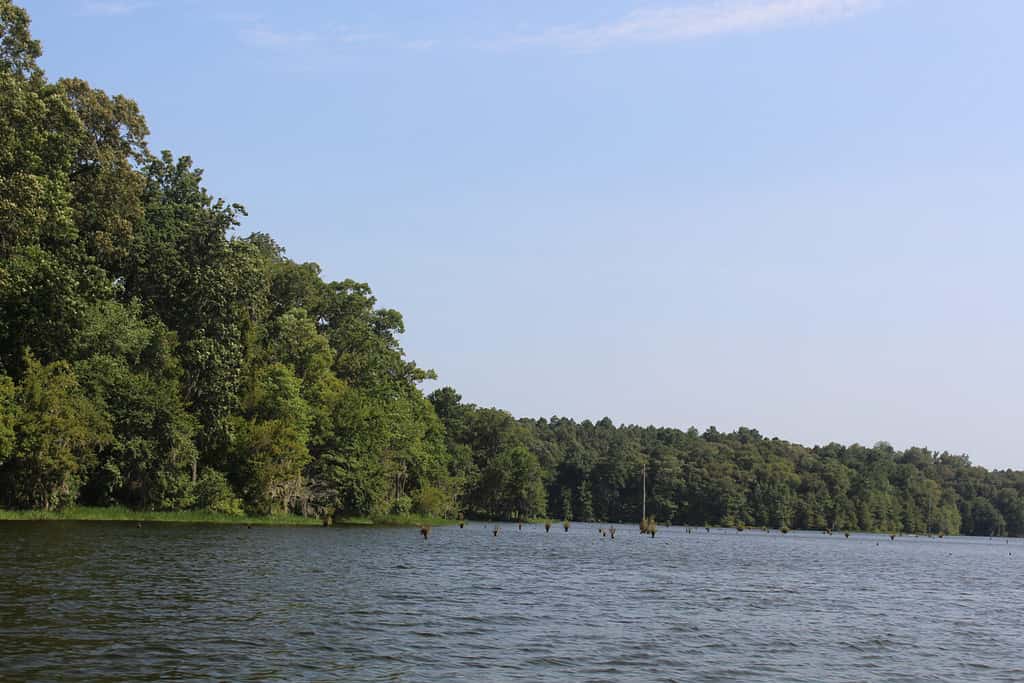
You’ll find Lake Kincaid in Kisatchie National Forest.
©Mindy Wilk/Shutterstock.com
The 25,000-acre-foot Kincaid Lake lies in the 600,000-acre Kisatchie National Forest. It’s another reservoir, the result of a 50-year-old earthen dam. Its waters irrigate the farmland in the area and offer recreation as with the other Louisiana lakes; recreation includes fishing, boating, water skiing, and swimming. The sparkling clear water of the lake is well stocked with catfish, sun perch, and bass. You’ll find trails around the reservoir for walking, hiking, and biking. You can also horseback ride and hunt in the forest.
Summary of the 6 Largest Lakes in Louisiana
| Lake | Size | |
|---|---|---|
| 1 | Lake Pontchartrain | 4,838,400 acre-feet |
| 2 | Toledo Bend Reservoir | 4,477,000 acre-feet |
| 3 | Lake Claiborne | 99,500 acre-feet |
| 4 | Caddo Lake | 85,100 acre-feet |
| 5 | Cross Lake | 65,807 acre-feet |
| 6 | Kincaid Lake | 25,000 acre-feet |
The photo featured at the top of this post is © iStock.com/XKarDoc
Thank you for reading! Have some feedback for us? Contact the AZ Animals editorial team.







